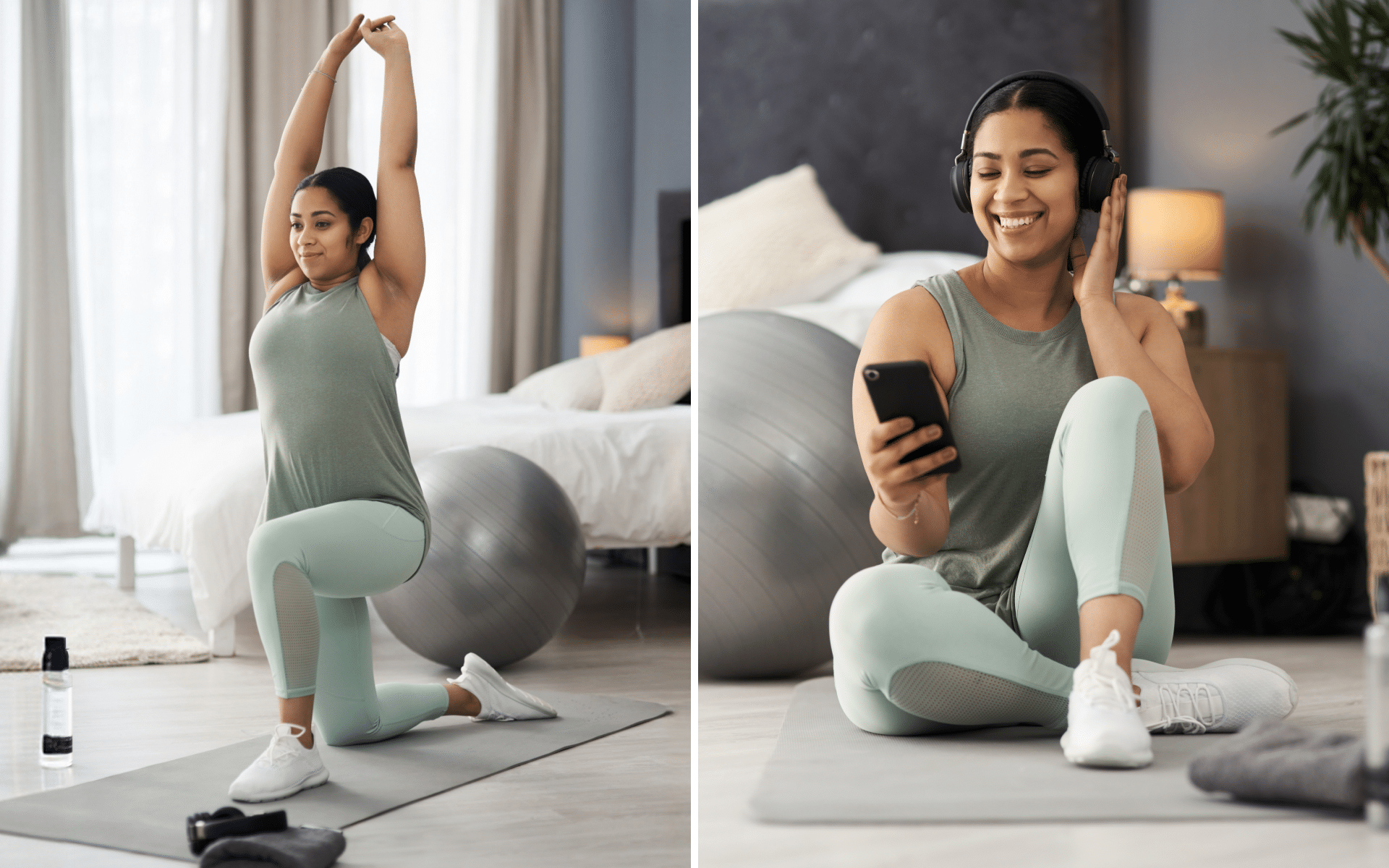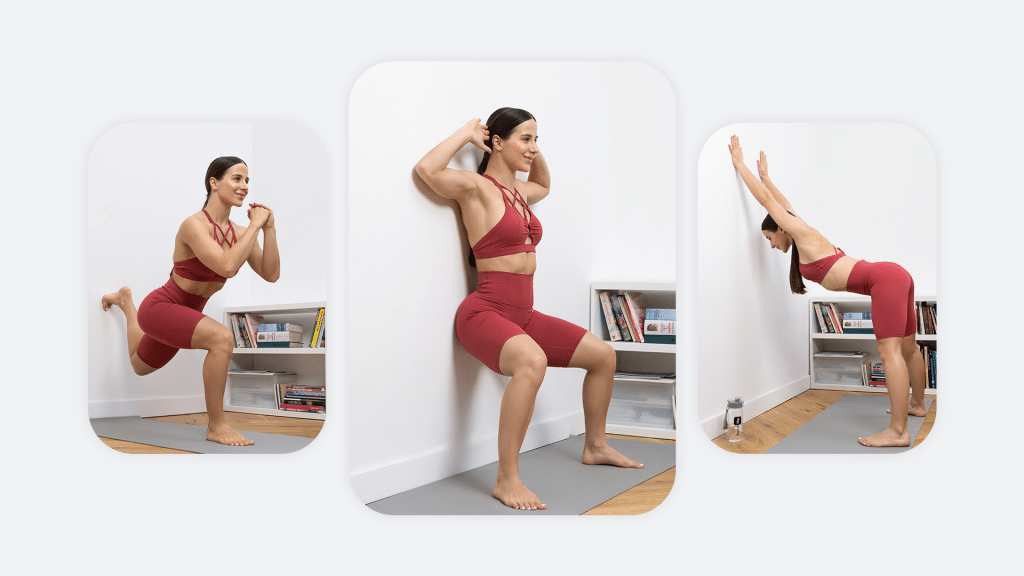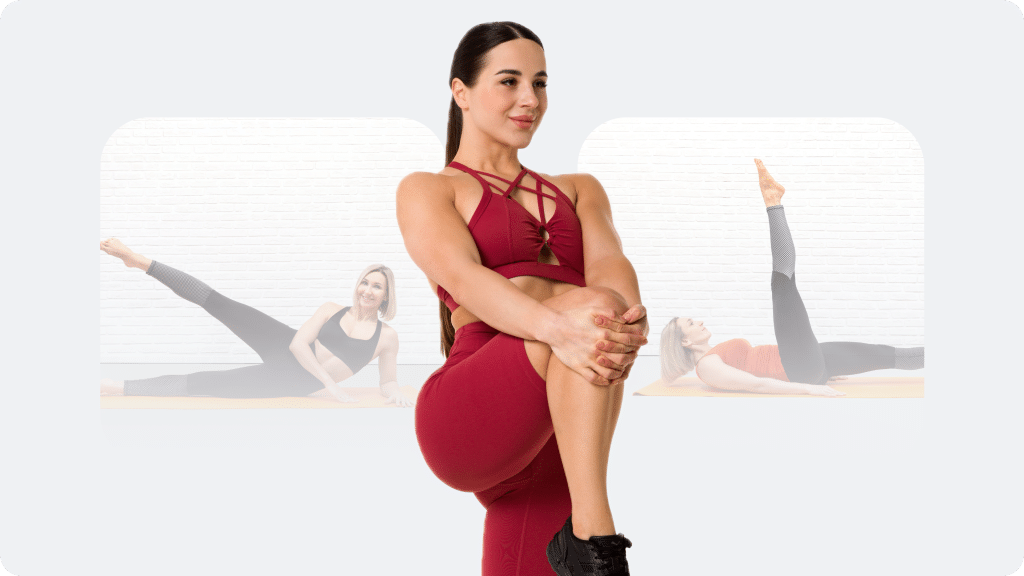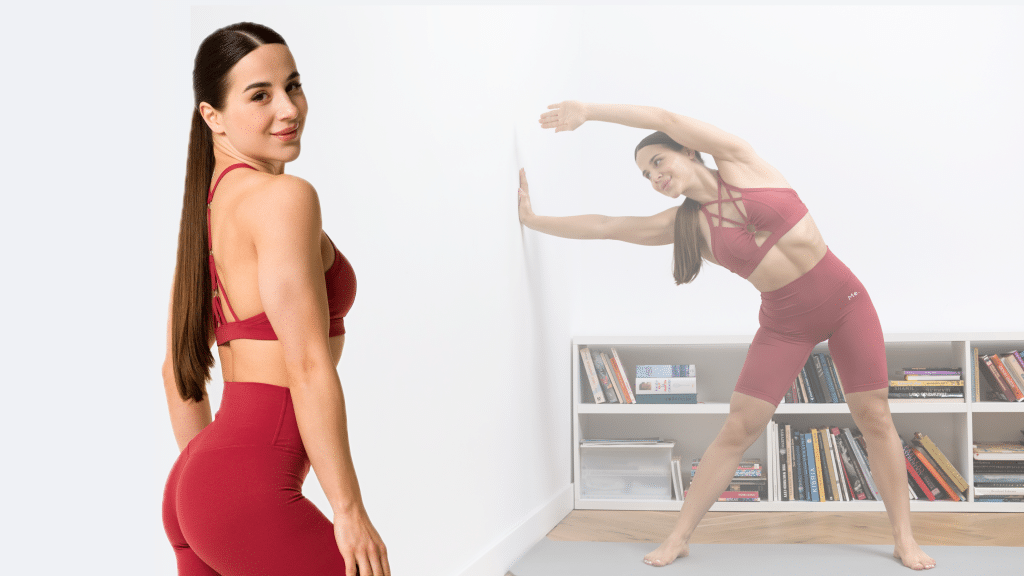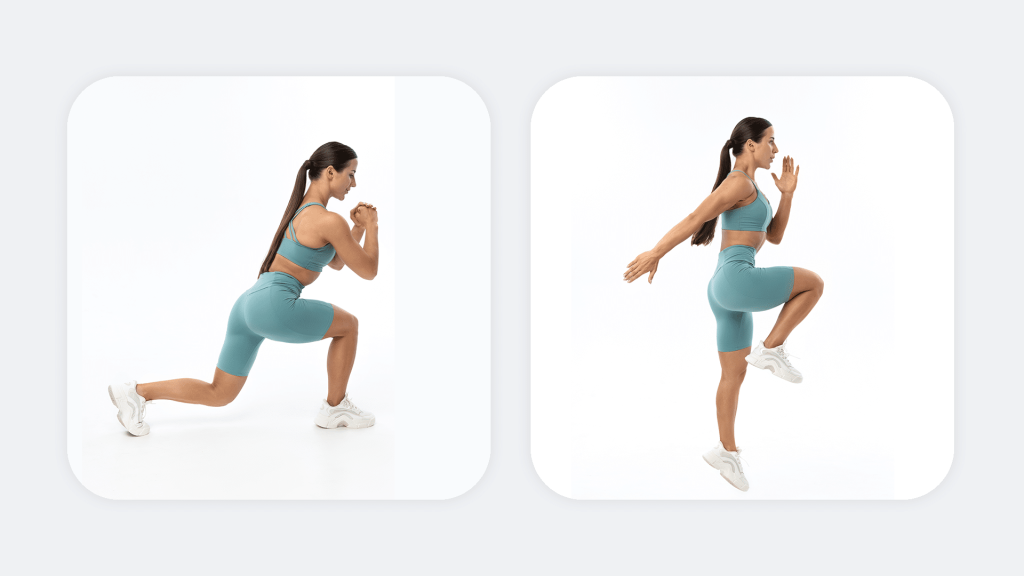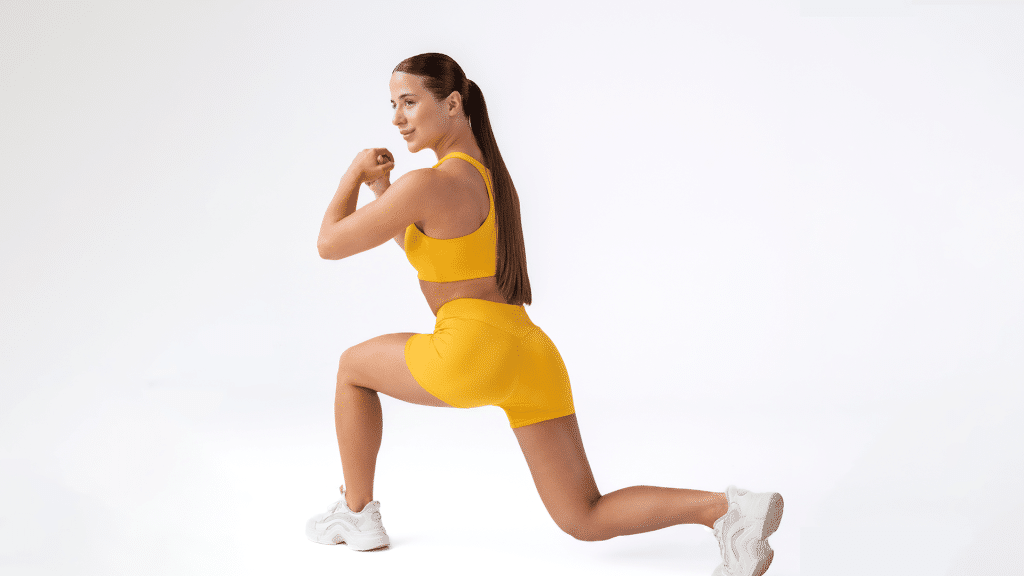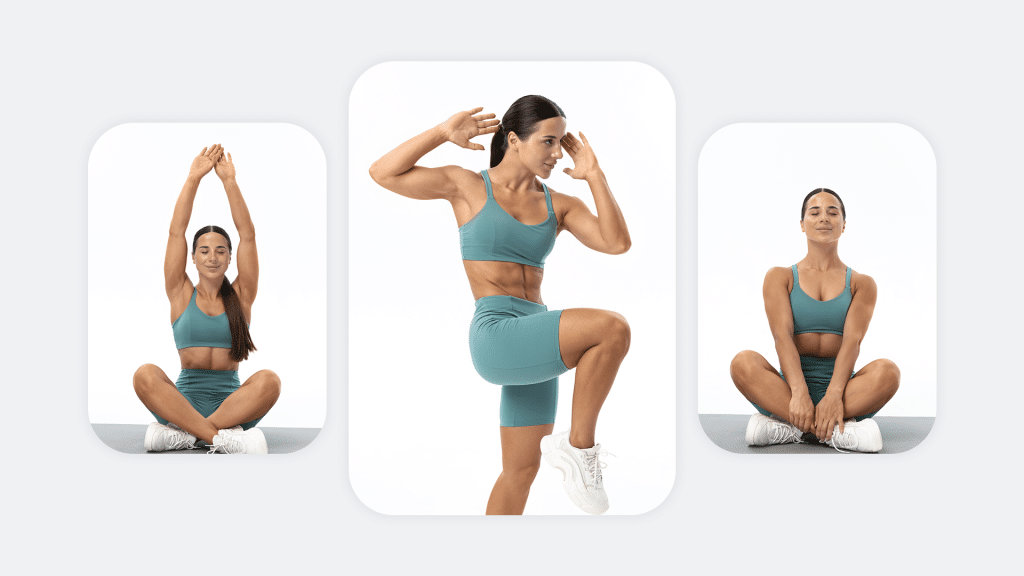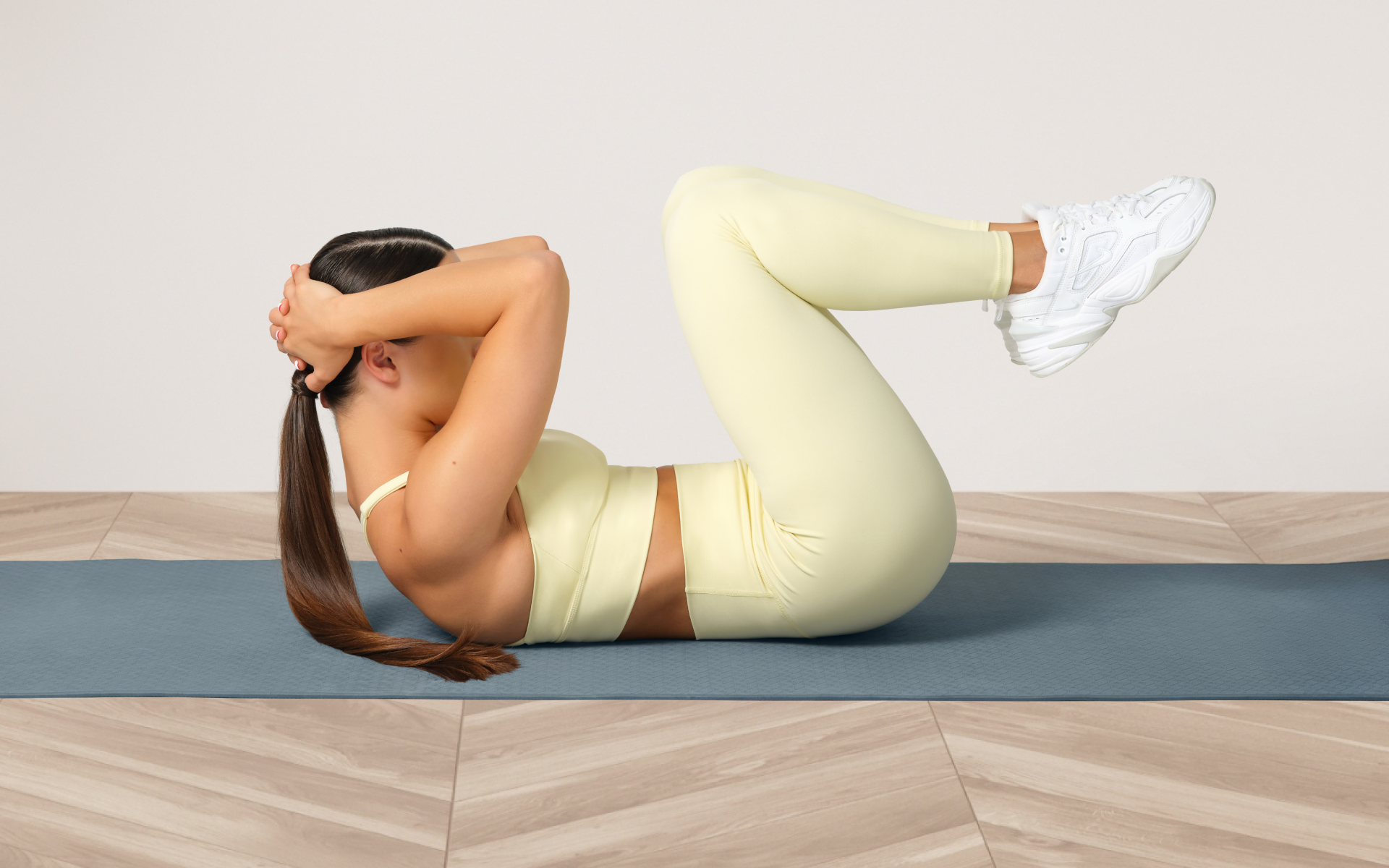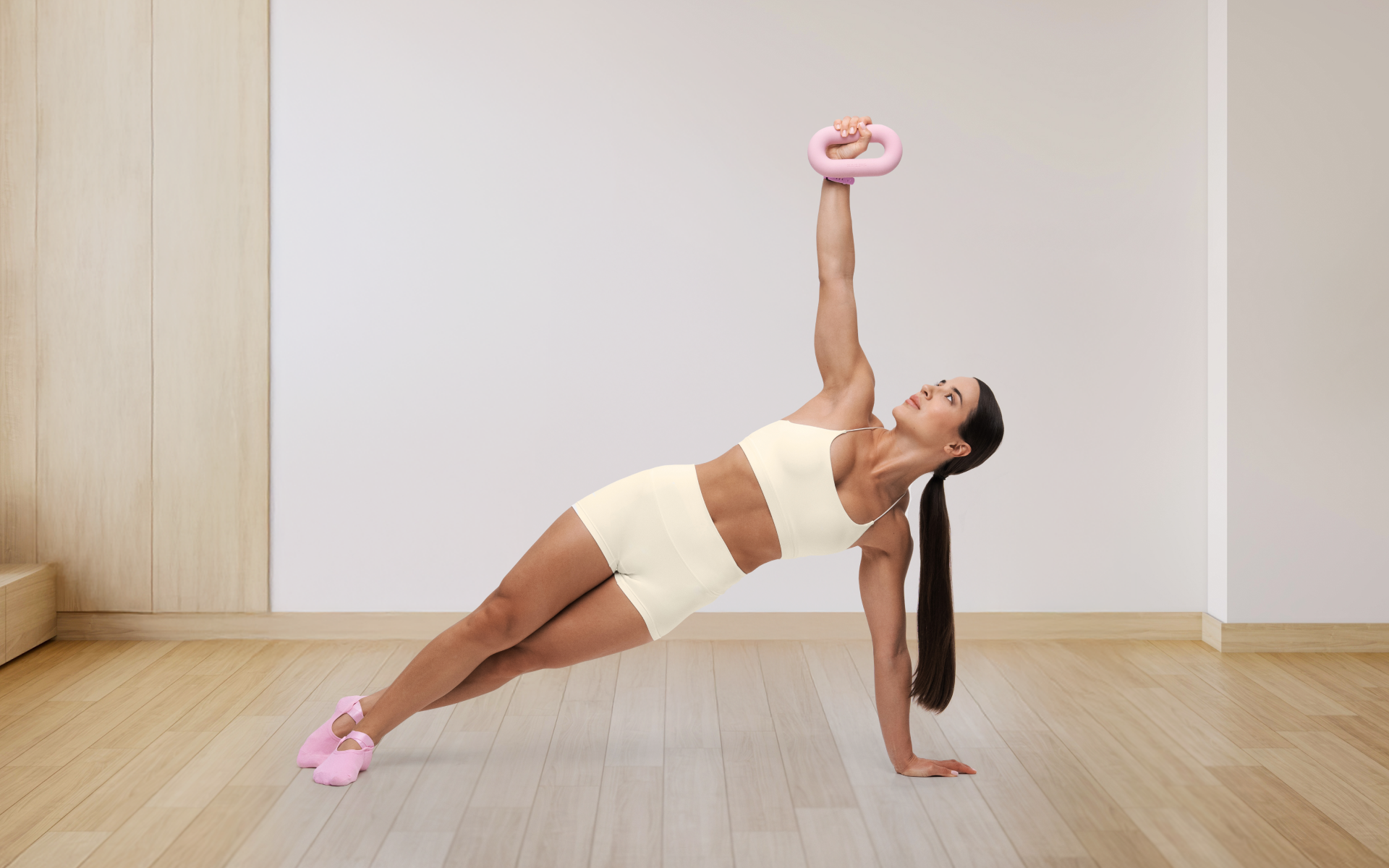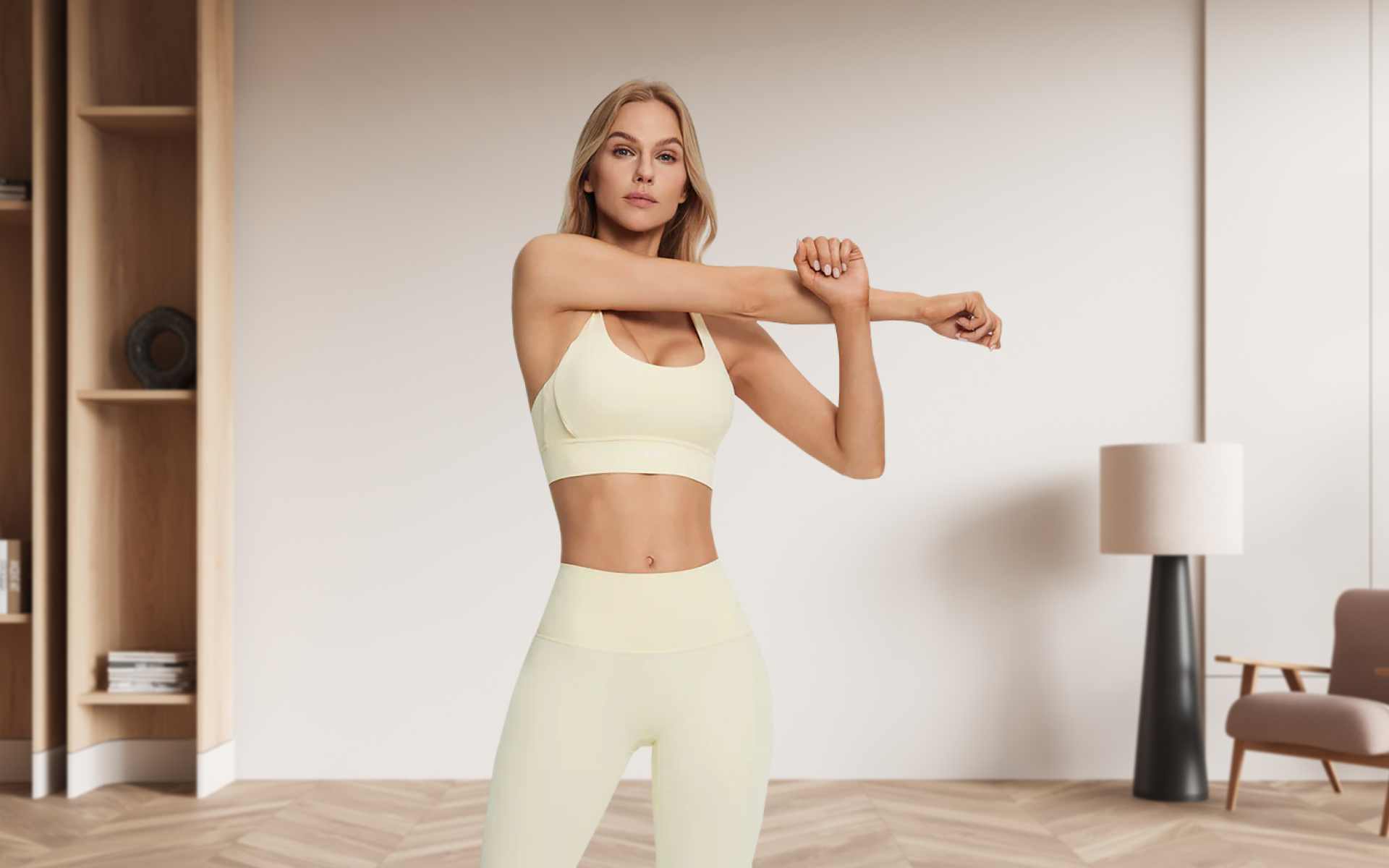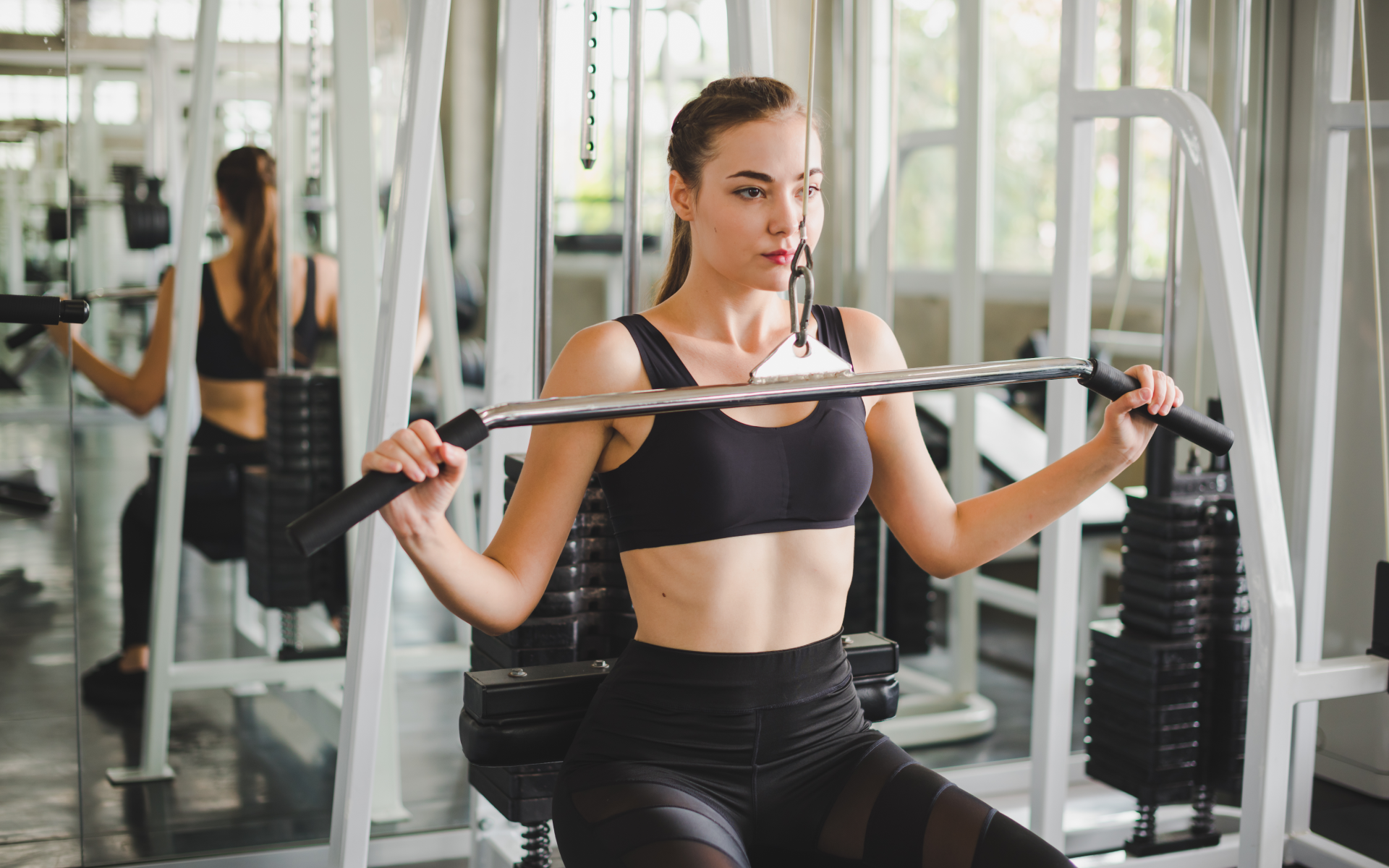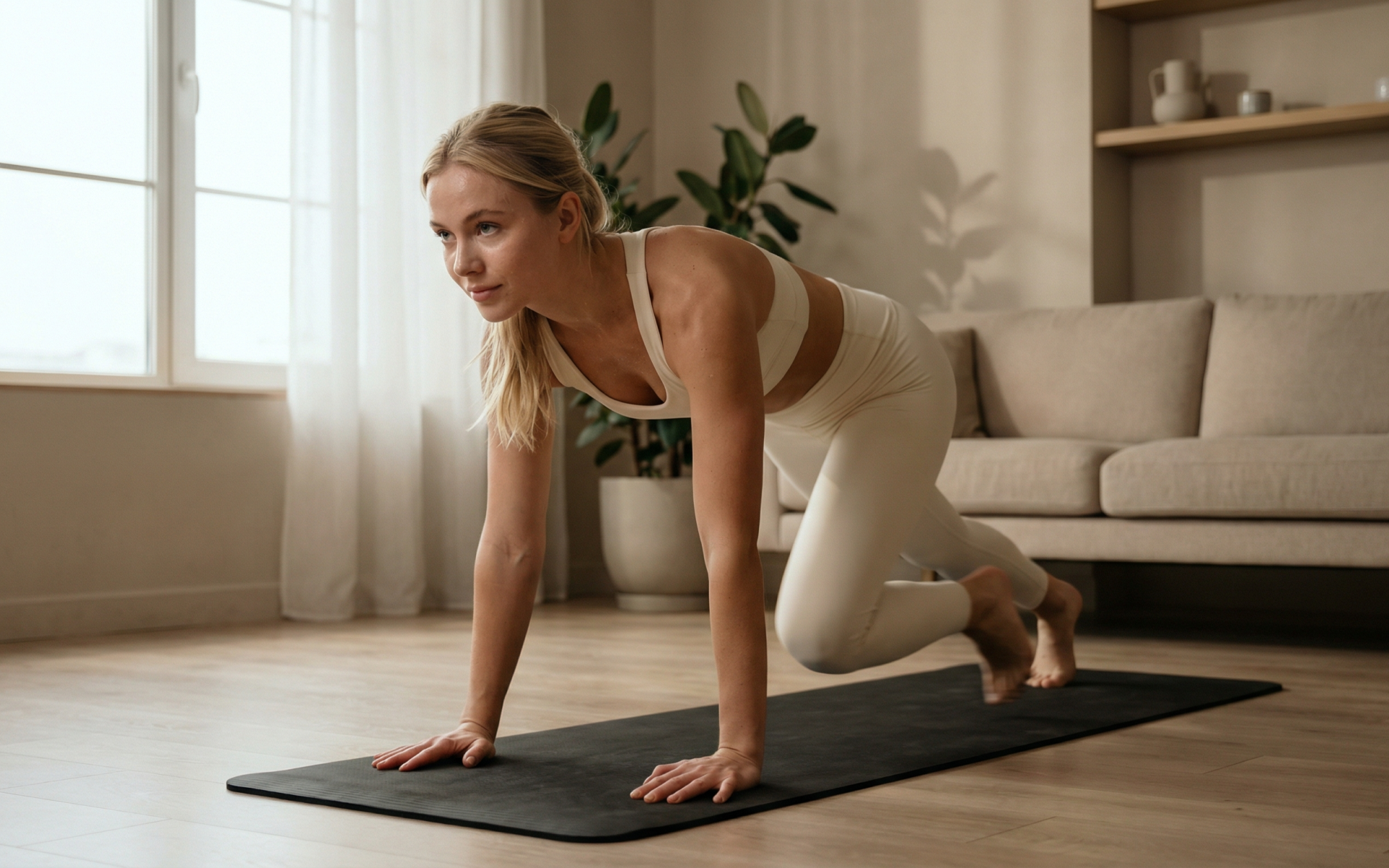While weightlifting and high-intensity interval training (HIIT) have become popular forms of exercise for building strength and endurance, there has been a recent rise in the popularity of “weightless workouts” or exercises that use little or no added resistance. These workouts often involve body weight exercises, such as push-ups, squats, and lunges, in addition to other techniques such as plyometrics and suspension training.
But are these weightless workouts actually effective? Can they really help you achieve your fitness goals without the use of traditional weights or gym equipment? Let’s take a closer look at the science behind weightless workouts and their effectiveness.
What Are Some Weightless Workouts?
Weightless workouts are any form of exercise that doesn’t involve using traditional weights or machines. This can include body weight exercises or other forms such as yoga, Pilates, and even dance-based workouts such as Zumba.
Here’s a sample full-body weightless workout routine:
Weightless Workout Routine
Warm-Up (5-10 minutes)
- Jumping Jacks: 2 minutes to increase your heart rate and warm up the large muscle groups.
- Arm Circles: 1 minute forward, 1 minute backward to loosen the shoulders.
- Leg Swings: 1 minute per leg to prepare the hips and legs.
Main Workout (30-40 minutes)
- Push-Ups
Steps
- Start in a plank position with your hands shoulder-width apart and your feet together.
- Lower your body until your chest almost touches the floor, keeping your elbows close to your body.
- Push back up to the starting position.
- Maintain a straight line from head to heels throughout.
- Beginners: 2 sets of 10 repetitions
- Intermediate: 3 sets of 15 repetitions
- Advanced: 4 sets of 20 repetitions or try diamond push-ups for added intensity
- Rest: 30 seconds between sets
- Squats
Steps
- Stand with your feet shoulder-width apart and your toes slightly pointed out.
- Lower your body by bending your knees and pushing your hips back as if sitting down.
- Keep your chest up and avoid letting your knees go past your toes.
- Return to standing by pressing through your heels.
- Beginners: 2 sets of 15 repetitions
- Intermediate: 3 sets of 20 repetitions
- Advanced: 4 sets of 25 repetitions or single-leg squats
- Rest: 30 seconds between sets
- Lunges
Steps
- Stand upright with your feet together.
- Step forward with one leg, lowering your hips until both knees are bent at a 90-degree angle.
- Ensure your front knee is directly above your ankle and your back knee doesn’t touch the floor.
- Push back to the start and switch legs.
- Beginners: 2 sets of 10 repetitions per leg
- Intermediate: 3 sets of 15 repetitions per leg
- Advanced: 4 sets of 20 repetitions per leg with a twist
- Rest: 30 seconds between sets
Lean and toned up body isn’t just a far-fetched fantasy. Check out the BetterMe: Health Coaching app and watch it propel your weight loss journey into high gear!
- Planks
Steps
- Start on your hands and knees, then extend your legs back to balance on your toes and forearms.
- Keep your body in a straight line from head to heels.
- Engage your core and avoid dropping your hips or lifting them too high.
- Hold the position for the desired time.
- Beginners: Hold for 20 seconds, rest 10 seconds, repeat 3 times
- Intermediate: Hold for 30 seconds, rest 15 seconds, repeat 3 times
- Advanced: Hold for 45 seconds, rest 15 seconds, repeat 3 times or try side planks
- Rest: 15 seconds between repetitions
Read more: Calisthenics Poses: The Best Exercises for Beginners and Beyond
- Burpees
Steps
- Stand with your feet shoulder-width apart.
- Drop into a squat and place your hands on the floor.
- Jump your feet back into a plank position.
- Perform a push-up, then jump your feet back to your hands.
- Explode into a jump with your arms overhead.
- Beginners: 2 sets of 5 repetitions
- Intermediate: 3 sets of 10 repetitions
- Advanced: 4 sets of 15 repetitions
- Rest: 45 seconds between sets
- Mountain Climbers
Steps
- Start in a plank position with your hands under your shoulders.
- Quickly drive your knees toward your chest, alternating legs.
- Keep your core engaged and your back flat throughout.
- Beginners: 2 sets of 20 seconds fast-paced
- Intermediate: 3 sets of 30 seconds fast-paced
- Advanced: 4 sets of 40 seconds fast-paced
- Rest: 30 seconds between sets
Cool-Down (5-10 minutes)
- Hamstring Stretch: 1 minute per leg
- Quadriceps Stretch: 1 minute per leg
- Child’s Pose: 2 minutes to relax the back and shoulders
- Deep Breathing: 2 minutes to bring your heart rate back to normal
Tips for Modifications and Increased Intensity
- Modifications: If the exercises are too difficult, reduce the repetitions or perform modified versions (e.g. knee push-ups).
- Increased Intensity: For a greater challenge, reduce the rest times between sets, add explosive movements such as jump squats, or incorporate high-intensity intervals.
This routine is designed to target different muscle groups and provide both strength and cardiovascular benefits. Adjust the repetitions and rest intervals based on your fitness level.
Do Weightless Workouts Work?
Weightless workouts achieve results through several key mechanisms:
- Muscle Engagement: Body weight exercises require multiple muscle groups to work together, which promotes overall muscle engagement (1). For example, a push-up works the chest while also engaging the shoulders, triceps, and core.
- Progressive Overload: Even without weights, you can increase the difficulty of exercises by adjusting the number of repetitions, altering the speed, or incorporating variations such as single-leg squats. This progressive overload challenges the muscles, which leads to strength gains.
- Repetition and Time Under Tension: Performing exercises with a focus on repetition and maintaining muscles under tension for longer periods enhances muscle endurance and growth. This sustained effort helps break down muscle fibers, which then rebuild stronger.
- Fatigue Management: By pushing your muscles to fatigue through high repetitions or extended holds, weightless workouts stimulate muscle adaptation and growth. Managing fatigue effectively can lead to improved muscular endurance and strength.
- Stabilization and Balance: Many weightless exercises require balance and stabilization, which engage smaller stabilizing muscles. This improves balance and enhances overall muscle coordination and strength.
- Core Activation: Exercises such as planks and lunges heavily involve the core muscles, which are essential for stability and strength. A strong core supports better posture and reduces the risk of injury (2).
- Plyometrics and Explosive Movements: Incorporating plyometric exercises, such as jump squats, can improve power and cardiovascular fitness by increasing heart rate and muscle activation.
These mechanisms collectively contribute to building strength, endurance, and overall fitness without the need for traditional weights.
Can You Get Fit with Only Body Weight Exercises?
Absolutely. Body weight workouts are a powerful tool for achieving overall fitness by targeting various elements such as cardiovascular endurance, muscular strength, flexibility, balance, and core stability. Here’s how you can enhance each element with body weight exercises (1):
Boost Your Cardiovascular Endurance
Body weight exercises such as burpees, mountain climbers, and jumping jacks elevate your heart rate, which improves cardiovascular endurance. These exercises engage large muscle groups, increasing oxygen consumption and enhancing heart and lung efficiency.
High-intensity interval training (HIIT) sequences that use these movements can further boost your cardiovascular fitness.
Build Your Muscular Strength
Body weight exercises are excellent for building muscular strength. Moves such as push-ups, pull-ups, and body weight squats challenge multiple muscle groups, which promotes strength and muscle tone. By adjusting variations and increasing repetitions, you can progressively overload muscles, leading to strength gains.
Enhance Your Flexibility
Flexibility can be significantly improved through body weight movements that involve dynamic stretching and static holds. Incorporating yoga poses such as downward dog, pigeon pose, and forward bends into your routine enhances muscle elasticity and joint range of motion, which reduces the risk of injury and improves overall movement.
Improve Your Balance
Balance is a crucial element of fitness enhanced by exercises that require stabilization. Single-leg stands, pistol squats, and balance-focused yoga poses such as tree pose engage the stabilizing muscles in the ankles, knees, and core. These exercises improve proprioception and muscle coordination, which are essential for functional fitness.
Strengthen Your Core Stability
Core stability is the foundation of many body weight exercises. Planks, Russian twists, and side planks specifically target the core muscles, including the abdominals, obliques, and lower back. A strong core supports better posture, enhances performance in other exercises, and reduces the risk of lower back pain. Our previous post goes into great detail about strengthening your core with Home Pilates.
Can You Get Ripped with Body Weight Exercises?
Yes, you can achieve a ripped physique through body weight exercises by leveraging their ability to reduce body fat and build lean muscle. Here’s how body weight exercises contribute to achieving a low body fat percentage essential for a ripped appearance:
- Increasing Metabolic Rate
Body weight exercises, particularly when performed at high intensity, can significantly elevate your metabolic rate. This increase in metabolism continues even after the workout, a phenomenon that is known as excess post-exercise oxygen consumption (EPOC) (3).
By maintaining a higher metabolic rate, your body burns more calories throughout the day, which contributes to fat loss and a leaner physique.
- Promoting Fat Loss
Body weight workouts are effective for burning calories and reducing body fat. When combined with high-intensity interval training (HIIT) or circuit training, these exercises create a calorie deficit, which is necessary for fat loss (4, 5). In particular, HIIT involves short bursts of intense exercise followed by rest or low-intensity periods, maximizing calorie burn and enhancing fat oxidation.
- Building Lean Muscle Mass
Body weight exercises such as push-ups, pull-ups, and squats are excellent for building lean muscle mass. Lean muscle is metabolically active tissue, which means that it burns more calories at rest compared to fat tissue. By increasing muscle mass, you boost your basal metabolic rate (6), which helps maintain a lower body fat percentage and achieve a ripped appearance.
BetterMe: Health Coaching app is a foolproof way to go from zero to a weight loss hero in a safe and sustainable way! What are you waiting for? Start transforming your body now!
- Enhancing Muscle Definition
The combination of resistance and cardiovascular elements in body weight exercises helps sculpt and define muscles. Exercises that focus on multiple muscle groups and incorporate varied movements contribute to improved muscle tone and definition, which are essential components of a ripped physique.
- Role of Consistency and Diet
While body weight exercises are important, achieving and maintaining a low body fat percentage also requires consistency and a balanced diet.
Regular workouts, together with a diet that is rich in lean proteins, healthy fats, and complex carbohydrates, support fat loss and muscle building. Adequate hydration and nutrient timing further enhance performance and recovery, which helps you achieve the ripped look (7).
By understanding and applying these scientific principles, body weight exercises can be a powerful tool in your fitness arsenal for achieving a lean and muscular appearance.
Is Calisthenics Safer than Weights?
When it comes to exercise safety, calisthenics often stands out as a preferable option compared to weightlifting, particularly for those who are concerned about reducing injury risk. Both forms of exercise have their benefits, but calisthenics is generally considered to be safer due to its reliance on natural body movements and the lower impact it has on the joints.
Lower Risk of Injury
Calisthenics exercises involve using your body weight as resistance, which naturally limits the load that is placed on your muscles and joints. This can reduce the likelihood of overexertion and injury. In contrast, weightlifting can sometimes lead to injuries if heavy weights are used improperly or if there’s a sudden increase in load without adequate preparation.
Natural Movements and Joint Safety
The movements in calisthenics are often more natural and involve multiple muscle groups, which can lead to better overall functional fitness and coordination. Exercises such as push-ups, pull-ups, and squats mimic daily activities, which promotes joint health and reduces the risk of acute injuries that are often associated with unnatural or isolated movements in weightlifting.
Importance of Proper Form
Regardless of whether you choose calisthenics or weightlifting, maintaining proper form and technique is essential for preventing injuries. In calisthenics, focusing on form helps ensure exercises are performed correctly, engaging the right muscles and avoiding undue stress on the joints. Similarly, weightlifting requires strict adherence to form, particularly when handling heavier weights, to prevent strains, sprains, and other injuries (8).
Accessibility and Equipment
Calisthenics is inherently more accessible and requires little to no equipment, which makes it an excellent choice for beginners or those with limited access to gym facilities. This accessibility can contribute to its safety profile, as exercises can be performed almost anywhere, allowing for a gradual build-up of strength and endurance.
So, while both calisthenics and weightlifting can be safe and effective forms of exercise, calisthenics offers a lower impact, more natural approach that can reduce the risk of injury, particularly for beginners or those who are looking for a body weight-focused fitness routine.
Read more: Beginner Full-Body Strength Training Routine: Exercises, Tips, and FAQs
What Are the Disadvantages of Body Weight Exercises?
While they are excellent for building functional strength and improving endurance, certain limitations of body weight exercises may hinder progress, especially for those who are targeting specific fitness milestones or advanced muscle growth:
- Limited resistance for advanced strength training: Body weight exercises may not provide enough resistance for advanced athletes who are looking to significantly increase muscle strength and power.
- Difficulty in isolating specific muscle groups: It’s often challenging to target specific muscle groups precisely, as body weight exercises tend to engage multiple muscles simultaneously.
- Potential for plateauing without progression: Without external weights, progressing in difficulty can be challenging, leading to potential plateaus in strength and muscle development.
- Need for creativity to increase intensity: To maintain progress, individuals must creatively modify exercises, such as altering angles or adding plyometric elements, to increase intensity.
- Not ideal for significant muscle mass gains: Compared to traditional weightlifting, body weight exercises may be less effective for those who are aiming for substantial muscle mass increases.
- Challenges in maintaining motivation and variety: Without the variety offered by gym equipment, some individuals may struggle with motivation and find it tough to keep workouts engaging and diverse.
Home workouts can be sufficient for achieving a variety of fitness goals, depending on the structure and intensity of the routine. With the right combination of exercises targeting strength, cardio, flexibility, and endurance, individuals can maintain or even improve their fitness levels. The key is consistency, variety, and progressive overload to continue challenging the body. Although home workouts may lack some equipment advantages, they can be effective with body weight exercises, resistance bands, and small weights. Exercising every day can be beneficial for overall health (9), as long as the workout intensity and type are varied to allow for adequate recovery. It’s important to listen to your body and incorporate rest days or low-intensity activities such as walking, stretching, or yoga to prevent overtraining and reduce injury risk (10, 11). A balanced routine that includes different muscle groups and exercise types will support recovery and long-term fitness gains. Two-hour workouts can be excessive for most people, especially if performed at high intensity. The ideal workout duration largely depends on fitness goals, level, and type of activity. For general fitness, 30 to 60 minutes of focused exercise is typically sufficient. Longer sessions may be appropriate for endurance athletes or those with specific training objectives, but it’s important to ensure proper nutrition, hydration, and rest to support the body’s demands. Bodybuilders often prioritize weightlifting and resistance training as these methods allow for precise control over resistance levels, which is essential for muscle hypertrophy (12). While body weight exercises are excellent for functional strength and endurance, they may not provide the same level of resistance needed for significant muscle mass gains. However, many bodybuilders incorporate body weight exercises such as push-ups and pull-ups as complementary activities to enhance their overall strength and fitness.Frequently Asked Questions
Are home workouts enough?
Is it OK to exercise every day?
Is two hours too long to work out?
Why don’t bodybuilders do body weight exercises?
The Bottom Line
Weightless workouts offer a versatile and effective approach to fitness, allowing individuals to build strength and endurance and achieve a lean physique without the need for traditional gym equipment. However, it’s important to recognize the limitations, such as the challenge of providing sufficient resistance for advanced strength training.
To fully harness the benefits of weightless workouts, consistency, creativity in exercise variations, and a balanced diet are essential. By integrating these elements, individuals can effectively progress toward their fitness goals, using body weight exercises as a powerful tool on their fitness journeys.
DISCLAIMER:
This article is intended for general informational purposes only and does not serve to address individual circumstances. It is not a substitute for professional advice or help and should not be relied on for making any kind of decision-making. Any action taken as a direct or indirect result of the information in this article is entirely at your own risk and is your sole responsibility.
BetterMe, its content staff, and its medical advisors accept no responsibility for inaccuracies, errors, misstatements, inconsistencies, or omissions and specifically disclaim any liability, loss or risk, personal, professional or otherwise, which may be incurred as a consequence, directly or indirectly, of the use and/or application of any content.
You should always seek the advice of your physician or other qualified health provider with any questions you may have regarding a medical condition or your specific situation. Never disregard professional medical advice or delay seeking it because of BetterMe content. If you suspect or think you may have a medical emergency, call your doctor.
SOURCES:
- The advantages of body-weight exercise (2024, health.harvard.edu)
- Core exercises: Why you should strengthen your core muscles (2022, mayoclinic.org)
- 7 Things to Know About Excess Post-exercise Oxygen Consumption (EPOC) (2014, acefitness.org)
- Evidence-Based Effects of High-Intensity Interval Training on Exercise Capacity and Health: A Review with Historical Perspective (2021, ncbi.nlm.nih.gov)
- Effects of Resistance Circuit-Based Training on Body Composition, Strength and Cardiorespiratory Fitness: A Systematic Review and Meta-Analysis (2021, ncbi.nlm.nih.gov)
- Increasing muscle mass to improve metabolism (2013, ncbi.nlm.nih.gov)
- 5 nutrition tips to maximize workouts (2023, mayoclinichealthsystem.org)
- 7 tips for a safe and successful strength training program (2015, health.harvard.edu)
- The Health Benefits of Exercise and Physical Activity (2016, link.springer.com)
- Why Rest Days Are Important for Muscle Building (n.d., blog.nasm.org)
- Active Recovery Workouts and How They Can Ease Muscle Soreness (2023, webmd.com)
- Resistance training prescription for muscle strength and hypertrophy in healthy adults: a systematic review and Bayesian network meta-analysis (2023, ncbi.nlm.nih.gov)
